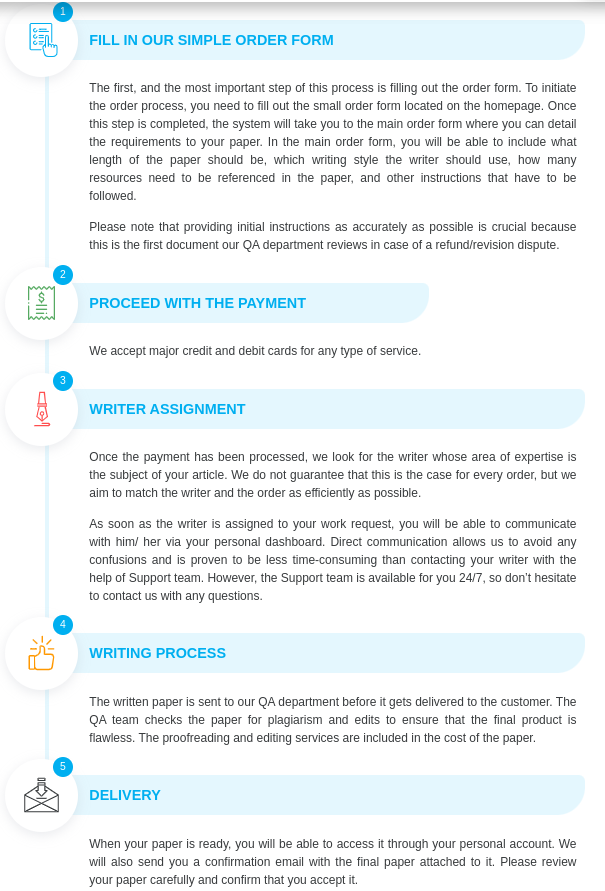Fred Macintyre ihuman Case Study
Assignment
Subjective
Chief Complaint (CC): Chest Pain/Pressure
History of Present Illness (HPI): Fred Macintyre is a 62-year-old male who presented for evaluation of a two month history of chest pain/pressure. The first episode begun two months ago while working. The pain is on the midsternum and radiates to the throat. It occurs three to four times every week and on a scale of 10, its severity is 5/10 or 6/10.The pain is aggravated with activity and stress and relieved with rest. Although he associates it with a single episode of shortness of breath and diaphoresis, he denies nocturnal awakening, pain with deep inspiration, fatigue/tiredness, and palpitations.
Current Medications: none
Allergies: he denies food, drug or environmental allergies
Pertinent PMH: the patient is hypertensive and has a history of high blood cholesterol levels controlled through dieting. He is up to date with all the immunizations
Social History: the patient acknowledges >50pack years of tobacco smoking, he denies alcohol, recreational or illicit drug use
Family History: the patient acknowledges a history of heart disease where both parents died of CVD and his elder sister has a history of myocardial infarction
History Questions Asked
- How can I help today?
- What are the events surrounding the start of your chest pain?
- When did the pain in your chest start?
- Does the pain in your chest radiate someplace else? Where?
- Where more precisely is the pain in your chest?
- What does the pain/discomfort in your chest feel like? (Squeezing, pressure, crushing, burning, stabbing, aching, tingling, suffocating)
- Does your pain awaken you from sleep?
- Is the chest pain worse with deep inspiration?
- Does anything make the pain in your chest better or worse?
- How often does this chest pain occur?
- How severe (1-10) is the pain in your chest?
- Do you have a problem with fatigue/tiredness?
- Do you have unusual heartbeats (Palpitations)?
- Do you have any other symptoms or concerns we should discuss?
- Have you noticed swelling in any part of your body?
- Do you have episodes of excessive sweating?
- Have you had any more stress in your life lately?
- Have you had any trauma to your chest?
- Any new or recent change in medications?
- Do you have any allergies?
Review of Systems (ROS)
- General: the patient denies unintentional weight gain/loss, fatigue, difficulty sleeping, night sweats and fevers
- HEENT: the patient denies experiencing headaches that don’t go away with either Tylenol or aspirin, he denies changes in vision, blurred vison, blurred vision, problems with hearing, ear discharge, ear pain, or difficulty swallowing
- Gastrointestinal (G/I): the patient denies vomiting, nausea, diarrhea, constipation, coffee ground or blood stained vomitus, bloating, or blood in bowel movements.
- Cardiovascular (CVS): the patient reports to months history of chest pain/pressure, he denies palpitations, facial or pedal edema, and intolerance to physical activity
- Respiratory(R/S): the patient reports one episode of shortness of breath (SOB), denies wheezing, difficulty breathing(DIB), and also acknowledges morning smokers’ cough
- Genitourinary(GU):the patient denies experiencing any burning or pain with urination, he denies difficulty stopping or starting urinating, urinary incontinence, urgency, or change in frequency.
- CNS: the patient denies spinning room, dizziness, numbness, tingling, and weakness of the upper and lower extremities, seizures, and tremors
Objective
General: the patient is AOX4, he appears in the office independently and is in no acute distress
VS: Temp: 97.90F, BP: 140/95mmHg, HR: 75bpm, RR-15pm, SPO2-95%
CVS: on auscultation, S1 and S2 are heard and are normal, there exists no significant changes with sitting, standing, squatting or with the Valsalva maneuver. JVP normal, there is a right carotid bruit, the PMI is at the 5th intercostal space at the MCL (mid-clavicular line), on au
RS/Chest: the chest is symmetrical, atraumatic, and barrel, he demonstrates normal effort and excursion for respiration, and he has no gynecomastia. On palpation, the patient has a normal tactile fremitus, the thorax is non-tender, and there is no supraclavicular, axillary, and infraclavicular adenopathy. On percussion, the thorax is normal.
Abdomen: on inspection, there is no abdominal distension, scars, or protruding masses, on auscultation, bowel sounds are present in all abdominal quadrants, non-tender on palpation with regions of dullness on percussion.
Peripheral/Extremities: mild bilateral feet mottling, slight clubbing, there is mild clubbing, no edema, no cyanosis, sparse hair distribution, no deformities or swelling of the joints, no signs of DVT, there is a left femoral bruit.
Assessment
Primary Diagnosis
- Stable Angina: angina refers to pain that occurs in the chest but can radiate to the shoulders, neck, arms, or jaws. It is caused by emotional stress or physical exertion but patients can present with other symptoms such as nausea, breathlessness, and gastrointestinal discomfort (Joshi & De Lemos, 2021). Among patients with myocardial ischemia, it is the primary symptom. It occurs as a result of obstruction of the coronary artery following atherosclerosis which ultimately restricts the flow of blood and delivery of oxygen to the myocardium. There is a wide range of modifiable and non-modifiable risk factors identified for stable angina. Modifiable risk factors include; hypertension, hyperlipidemia, obesity, diabetes mellitus, tobacco smoking, and chronic alcohol use (Joshi & De Lemos, 2021). On-modifiable risk factors include advanced age, male sex, ethnicity, and a family history of coronary artery disease.
Differential Diagnoses
- Gastroesophageal Reflux Disease (ICD10 K21.9): GERD is a chronic GIT disorder that is primarily characterized by the regurgitation of gastric contents into the esophagus. In the USA, it has an overall prevalence of 20% with a significant socio-economic burden that impacts both direct and indirect healthcare costs. According to evidence from currently existing literature, there are several risk factors that have been associated with the pathogenesis of GERD such as esophageal dysmotility, lower esophageal sphincter tone, delayed gastric emptying, and transient relaxation of the lower esophageal sphincter (LES) (Savarino et al., 2017). Other independent risk factors are; old age (50 years and older), tobacco use, a lower socio-economic status, excessive consumption of alcohol, and use of certain drugs (NSAIDs, benzodiazepines, nitroglycerin, antidepressants, and calcium channel blockers). Patients will often present with complains of inability to swallow, difficulty swallowing, epigastric pain, heartburn, and regurgitation (Savarino et al., 2017). However, I atypical cases, the patient tends to present with complaints of hoarseness, a chronic cough, asthma, and chest pain, just as the patient Darius presented. However, the chest pain is burning or squeezing in nature, is localized to the sternal region and can radiate to the neck, back, arms, or jaws.
- Esophageal Spasm: this is a disorder of esophageal motility that results from uncoordinated contractions. Although its exact etiology remains unknown, it has been associated with the risk factors of a high BMI, and total cholesterol. Patients will often present with dysphagia, chest pain, occasional regurgitation, and heartburn (Shibuki et al., 2017). However, the chest pain is located in the retrosternal region and is aggravated with eating too quickly, or consumption of cold or hot beverages.
Plan
Consults:
- There is need to consult with a cardiologist for further evaluation, close follow-up and management
Therapeutic Modalities
Pharmacological Management
- Start the patient on aspirin 81mg PO OD to decrease his overall risk of hypercoagulation (Kureshi et al., 2017).
- Start atorvastatin 40mg PO OD to decrease cardiovascular risk (Gulati et al., 2021).
- Propranolol 40mg PO BID for blood pressure and beta blockade
- Sublingual nitroglycerine 1 tab under the tongue 8 hourly.
Health Promotion
- Screening for colorectal cancer is recommended for all men up to the age of 75 years old
- Screening for diabetes mellitus is recommended for older adults with underlying chronic illnesses every three years.
- Counsel the patient to ensure up to date immunization with annual flu and pneumococcal vaccines, and a tetanus booster every 10 years
- Consider screening for prostate cancer which is recommended for men aged 55-69 years old
- Encourage the patient to enroll for smoking cessation therapy
- Encourage the patient to consider lifestyle modification with dietary modification to decrease blood cholesterol. He should consider having a low sodium diet, unsaturated fats, and high calorie meals among others.
Patient Education
- The need to modify is diet to decrease overall cardiovascular risk
- To increase his functional capacity by gradually engaging in mild exercises everyday such as stretching and walking for at least 30 minutes (Ferraro et al., 2020).
Disposition/Follow-Up Instructions:
- To return immediately if he experiences new onset of symptoms or the pain persists
- To follow up with a cardiologist in 48 hours for further evaluation and future consideration should the drug therapy fail to be effective
References
Ferraro, R., Latina, J. M., Alfaddagh, A., Michos, E. D., Blaha, M. J., Jones, S. R., & Arbab-Zadeh, A. (2020). Evaluation and management of patients with stable angina: beyond the ischemia paradigm: JACC state-of-the-art review. Journal of the American College of Cardiology, 76(19), 2252-2266.
Joshi, P. H., & De Lemos, J. A. (2021). Diagnosis and management of stable angina: A review. JAMA, 325(17), 1765-1778.
Kureshi, F., Shafiq, A., Arnold, S. V., Gosch, K., Breeding, T., Kumar, A. S., & Spertus, J. A. (2017). The prevalence and management of angina among patients with chronic coronary artery disease across US outpatient cardiology practices: insights from the Angina Prevalence and Provider Evaluation of Angina Relief (APPEAR) study. Clinical cardiology, 40(1), 6-10.
Savarino, E., Bredenoord, A. J., Fox, M., Pandolfino, J. E., Roman, S., & Gyawali, C. P. (2017). Advances in the physiological assessment and diagnosis of GERD. Nature reviews Gastroenterology & hepatology, 14(11), 665-676.
Shibuki, T., Kawakubo, H., Kawachi, K., & Mizuta, T. (2017). Diffuse esophageal spasm. Internal Medicine, 56(11), 1447-1447.
Writing Committee Members, Gulati, M., Levy, P. D., Mukherjee, D., Amsterdam, E., Bhatt, D. L., & Shaw, L. J. (2021). 2021 AHA/ACC/ASE/CHEST/SAEM/SCCT/SCMR guideline for the evaluation and diagnosis of chest pain: a report of the American College of Cardiology/American Heart Association Joint Committee on Clinical Practice Guidelines. Journal of the American College of Cardiology, 78(22), e187-e285.
Our expert nursing writers at nursingassignmentservice.com can do your Fred Macintyre ihuman Case Study Assignment, place your order here or whatsapp +1(914) 201-8471.




